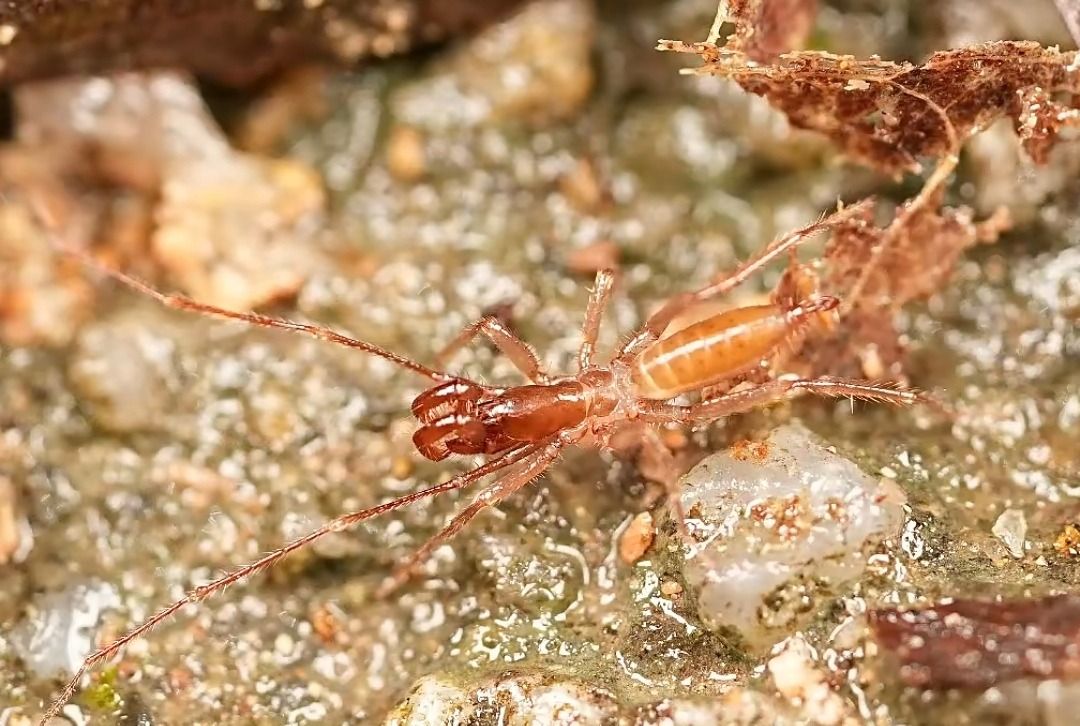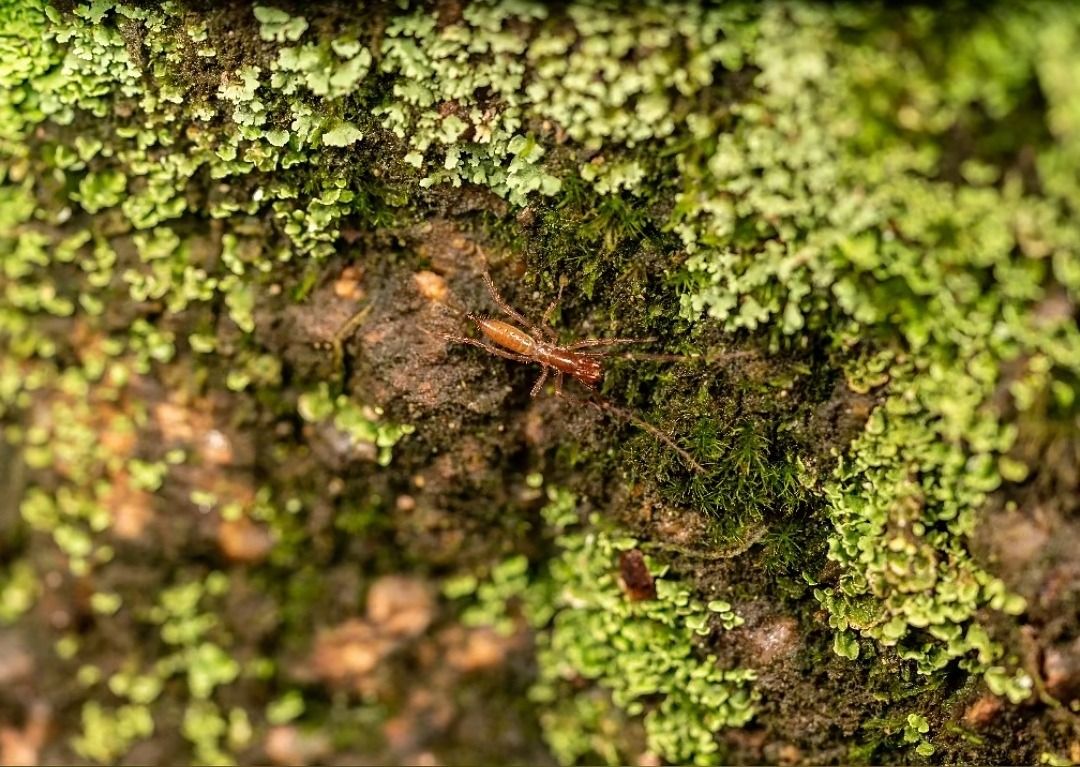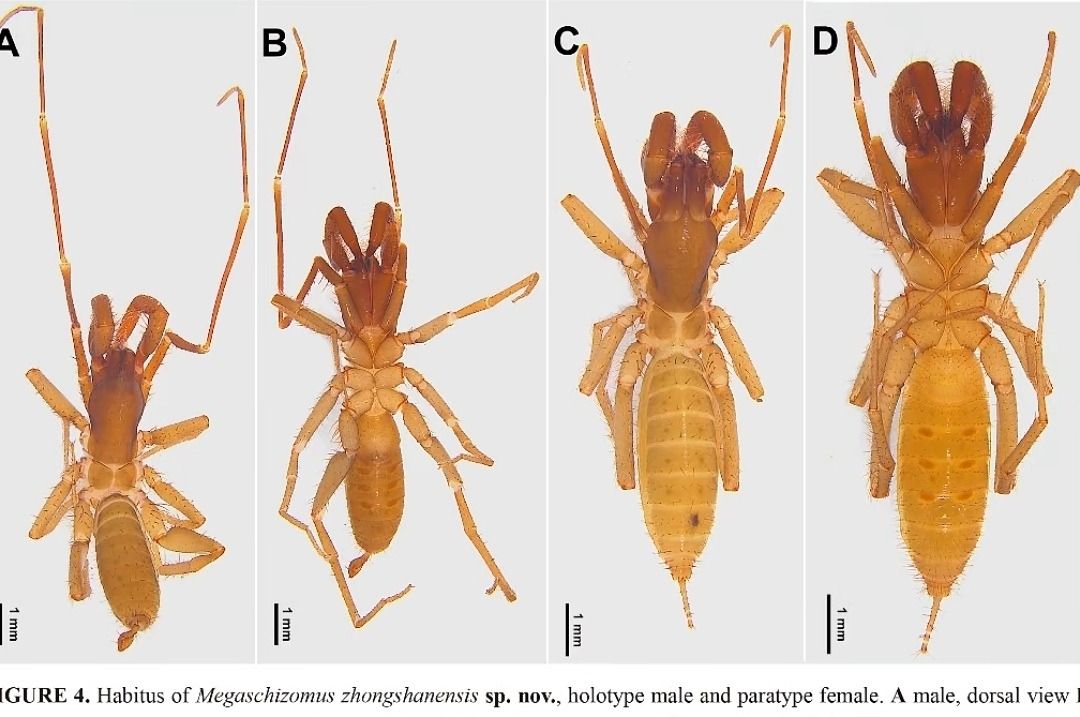Researchers have identified a new species of scorpion in Zhongshan National Forest Park, marking the seventh Schizomida (micro-whip scorpion) species recorded in China. It was named Megaschizomus zhongshanensis (Zhongshan Giant Shield Scorpion). The discovery was formally described in the international taxonomy journal Zootaxa on July 14.


Ecological photograph of Megaschizomus zhongshanensis, taken at Matishui Scenic Area within Zhongshan National Forest Park. Courtesy of the research team.
The arthropod, measuring 7.21–7.24 mm in length, was found during a documentary filming expedition led by Wu Keliang, an entomologist with Zhongshan's nature television program Xiangshan Natural Notes. Its habitat in the park's Matishui area, a mountainous stream zone, highlights the region's ecological significance, following the 2024 discovery of a new cockroach species in the area.
Belonging to the subfamily Megaschizominae, previously documented only in Africa, this species extends the subfamily's known range to Asia. Genetic and morphological analysis by Professor Zhang Feng's team at Hebei University confirmed its novelty. Specimens are now housed at the university's museum.
The scorpion's sensitivity to pollution makes it a critical bioindicator. "They exclusively inhabit pristine mountain streams and feed on springtails, reflecting ecosystem health," Wu noted.

(Zheng et al. 2025)
Researchers hypothesize the species may have arrived via imported African timber, such as Delonix regia (flame tree), used in urban greening projects. This parallels instances of arthropod dispersal through global plant trade. Zhongshan's Matishui area, where the scorpion thrives, has been protected within the national park since 2019, limiting human encroachment.
China now hosts seven known Schizomida species, all of which require undisturbed freshwater ecosystems. The discovery underscores the role of protected areas in biodiversity conservation.
Author | Feng Huiting
Editor | Huang Qini, James, Shen He
















